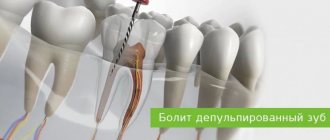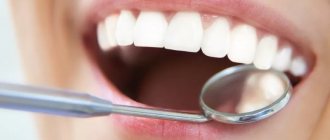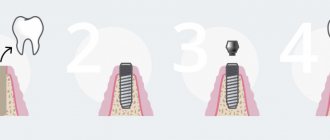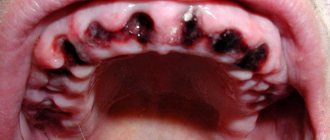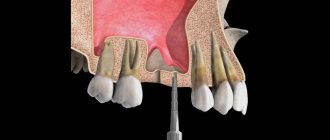From this article you will learn:
- Temperature after tooth extraction
- Why does the temperature rise after tooth extraction?
- In what other cases does hyperthermia occur?
- Are fevers associated with tooth extraction dangerous for children?
- How long does the temperature last after tooth extraction?
- How to help yourself at home with a hyperthermic reaction
- When you really can’t do without a doctor
- How to prevent your temperature from rising
- What is the role of the clinic in the prevention of hyperthermic conditions?
Tooth extraction in an adult or child is stressful, an operation, and unpleasant sensations before and after the procedure. And when it seems that everything is over, the patient discovers that he has a fever. Reaction – fear, repeated stress, worries.
Heat
Hyperthermia can be a natural reaction to surgery and a sign of a pathological condition. What should a patient do and when should he urgently seek medical help?
What can and cannot be done after tooth extraction
- What to do after tooth extraction
- What to do after wisdom tooth removal
- What not to do
- What do we have to do
- What to do after tooth root removal
- Baths after tooth extraction
- What to do after a child’s tooth extraction
- What to do after removing a tooth with a cyst
- Temperature rises after tooth extraction
Tooth extraction is a major dental operation.
The recovery period after such a procedure can take some time and last from three days to seven days. There are indications and contraindications for what measures the patient needs to take to ensure that the rehabilitation process goes as quickly and successfully as possible. If you strictly follow the dentist’s recommendations and the general rules of the postoperative period, you can significantly bring the moment of recovery closer and avoid unpleasant or even dangerous complications. Rules of conduct during recovery after a doctor has pulled out a tooth may differ depending on the severity of the operation performed, its type, the general health of the patient, his habits and age. However, there are general recommendations that are relevant for any postoperative situation.
Possible complications
If after seven days the tumor not only has not gone away, but has also grown and become denser, this indicates a progressive inflammatory process.
At the same time, other symptoms may appear: pain in the gums and cheeks (aching, cutting, throbbing), redness of the cheeks and gums, fever, weakness, loss of appetite, headache.
What complications can inflammation lead to:
- Alveolitis or “dry socket” - after a tooth is removed, a blood clot forms in the resulting socket. It serves as a protection and barrier to bacteria and protects the wound from infection. If it is somehow removed, the soft tissues are left without protection, pathogenic bacteria penetrate into them and suppuration begins. In advanced cases, inflammation spreads to other areas of the jaw; not only the cheek, but also the cheekbones and even the eye area swell.
- If, in addition to the tumor, the patient experiences severe pain in the jaw, this may indicate the development of osteomyelitis - inflammation of the bone tissue. The swelling on the cheek grows, spreading to the cheekbones and other parts of the face, the pain spreads to both jaws, the patient experiences pain when opening the mouth. If you do not consult a specialist in time, the disease can lead to blood poisoning.
- A gum abscess is a purulent inflammation inside the gum tissue. It is dangerous due to the spread of inflammation to other tissues, loosening and loss of teeth.
- Periostitis of the jaw (flux) is an inflammation of the jaw, characterized by increased temperature and severe pain in the jaw and temporal part. If left untreated, the flux can spread to the infraorbital area. In chronic form it can develop into osteomyelitis.
- Neuritis is damage to the facial nerve, accompanied by severe pain and swelling. A distinctive symptom is swelling of the larynx, palate, tongue, and cheeks.
Each of these complications can cause serious consequences, which is why it is so important to diagnose and treat in a timely manner.
What to do after tooth extraction
After the dentist has completed all removal procedures, the patient must take the following measures:
- The tampon that the doctor placed on the hole must be removed no later than half an hour later. If the patient has poor blood clotting, you can keep the compression pad on for 60 minutes;
- To reduce the likelihood of swelling of the soft tissues of the mouth or face, it is advisable to apply something cold to the cheek. This treatment measure will be effective only in the first hours after surgery. A piece of ice or frozen meat wrapped in cloth should be applied to the cheek several times for 5 minutes;
- On the first day, to avoid inflammation, you can do antiseptic baths;
- It is necessary to gently, carefully, but carefully carry out all hygiene procedures in the oral cavity, not excluding the area where the tooth was pulled out.
Compliance with these rules after removal will promote rapid healing of the hole and prevent infection.
Other causes of cheek swelling
Along with natural, so-called non-infectious inflammation, there are other causes of cheek swelling:
- tooth extraction due to gumboil;
- extraction with complications - in case of incorrect inclination or direction of tooth growth, when removing massive teeth and teeth with long roots;
- the presence of infection and inflammation in soft tissues;
- allergic reaction to medications or anesthesia;
- individual intolerance to components in medications or anesthetics;
- errors during extraction, insufficient antiseptic treatment of the oral cavity and residual infection;
- the presence of chronic diseases – hypertension, neuralgia, psycho-emotional pathologies;
- failure by the patient to comply with the recommendations of the dental surgeon, refusal of prescribed antibiotics or reduction of their dosage.
Most often, the tumor is caused by improper oral care, lack of disinfection with antiseptics, and skipping medications.
What to do after wisdom tooth removal
The third molar is usually pulled out due to inflammation that appears around it. At the same time, pus and infectious agents are likely to get into the wound. Therefore, in the postoperative period, the patient must follow general recommendations, as well as be as attentive as possible to his feelings, and note the slightest changes in his condition.
As soon as the hole stops bleeding, you should immediately remove the compression tampon. Its presence in the wound provokes the proliferation of bacteria and increases the likelihood of the onset of an inflammatory process.
The patient should be prepared for the fact that his gums will hurt for 3-5 days after the procedure. You need to purchase recommended anesthetics and take them on schedule. If the pain syndrome has become stronger, swelling of the face and gums increases over the course of several days, the elevated temperature does not subside, and an unpleasant odor begins to come from the socket, you need to call the dentist.
Reviews from patients
I had my wisdom tooth removed. After the procedure, I was exhausted, and in the evening my temperature rose sharply, but not much. My doctor told me everything and explained what this could be. I didn't take the pill. My husband had no fever at all after the removal. I thought that this was not a terrible phenomenon. I only ate liquid porridge. Surprisingly, the next day everything went away for me. All that remained was an unpleasant feeling at the removal site.
I've always been afraid of dentists. I haven't visited these doctors for a long time. Accordingly, my teeth were in critical condition. When my cheek suddenly became swollen, I was seriously scared. There was nothing to do, I ran to the hospital, to the doctors who were terrible for me. The doctor was dismayed by my condition. Unfortunately (and for obvious reasons), my tooth was not saved. I felt calm in the dentist's chair. It didn't hurt very much. The injection worked well. I left the office and started shaking. Probably due to an emotional background and due to the difficulty of removal (it was a distant tooth), my temperature jumped sharply in the evening. I was pounding, the fever was intense, about forty degrees. I took antipyretic tablets (2 pieces). I feel a little better. I drank another one at night. Maybe someone will say a lot, but I felt bad. The next day made my life easier, my temperature was 37ºC. The condition is more or less normal. However, for some reason the removal site ached. On the first day, amid the heat, I didn’t notice it. On the third day I experienced significant relief. There was no temperature, the pain did not bother me. Thank God, but everything is fine now. I will now try to take more responsible care of my teeth. After all, temperature is not a very serious problem, but it is still a dangerous signal.
Sources used:
- Bernardsky Yu. I. Fundamentals of maxillofacial surgery and surgical dentistry. - M.: Medical literature, 2000
- Practical therapeutic dentistry" (Nikolaev A.)
- Crall JJ, Donly KJ (2015). "Dental sealants guidelines development: 2002-2014". Pediatric Dentistry.
- Faculty of Dentistry and Medical Technologies St. Petersburg State University
What not to do
In order to avoid any complications after surgery to remove any tooth, you must follow the following rules:
- Do not eat or drink anything for 3 hours after surgery;
- It is not recommended to eat hot, spicy, hard and fine-grained foods, or drink hot drinks. The load when chewing food must be transferred to the healthy side of the jaw;
- For 3 days, limit physical activity and procedures that increase blood pressure or increase blood flow. Do not take hot baths. Bathhouse, sauna, solarium, visiting the beach are prohibited;
- Do not touch the hole with your tongue, finger, toothbrush, or toothpick;
- Do not rinse your mouth;
- Do not ignore the advice, recommendations and prescriptions of the dentist. Do not violate your medication schedule.
If the patient has any doubts about his condition or questions for the doctor, he should not put off calling the clinic “for later.”
What do we have to do
After the removal procedure, you need to limit your activity for a while, adhere to a healthy lifestyle and diet.
It is better to take the so-called “sick leave” - spend time at home in a calm environment, closely monitoring your condition.
Smoking and drinking alcoholic beverages are prohibited; it is better to abstain from them.
The menu for the recovery period should consist of nutritious food that does not require thorough chewing. It is better to reduce the number of meals by increasing the calorie content of dishes.
It is imperative to carry out hygienic procedures, since ignoring them can trigger an inflammatory process in the socket of an extracted tooth.
Mouth rinsing is prohibited; it is better to replace it with medicinal baths.
You need to make sure that the postoperative sutures do not come apart; to do this, you should not open your mouth wide or strain your facial muscles.
Postoperative actions
Preventive measures consist of the following actions:
- Antiseptic treatment (for example, Rotokan or Burana 400 solution).
- Sanitation.
- Carrying out regular hygiene procedures.
- Using traditional methods.
In folk medicine, calendula, chamomile, St. John's wort, sage and calamus are used. They use traditional methods in parallel with medications.
On the day of removal, you should not visit the bathhouse or eat hot or cold food. It is necessary to thoroughly avoid contact with sick people, beware of winds and drafts. You should not eat too hard foods, so as not to damage your painful gums. Do not drink alcohol or consume hot spices.
What to do after tooth root removal
Root removal is often accompanied by circumstances that complicate the dentist’s work and can negatively affect the duration and course of the recovery period.
In order for rehabilitation to progress at a normal pace and tooth reconstruction to begin, the patient must follow the rules of the recovery period.
First of all, it is necessary to avoid the occurrence of inflammation in the area of the torn root. For this you will need:
- Observe the rules of personal hygiene;
- Do not overheat the head area;
- Do not rinse or touch the affected area with your tongue;
- Do medicinal baths, take painkillers, start taking antibiotics if the doctor gives such a recommendation.
You should try to protect the area of the torn root as much as possible, since any infectious process at the site of removal can lead to serious complications.
When to sound the alarm
- It happens that removal turns out to be difficult. Then the doctor warns the patient in advance about possible complications and tells him to come for a follow-up appointment in the coming days. You should sound the alarm if:
- Symptoms of a viral disease are observed. Then the fever persists for longer than three days. Cough, runny nose, and throat congestion appear. Efficiency decreases.
- After one or two days the temperature does not decline, but on the contrary, begins to rise. If it stays at 38.5-39 degrees throughout the day, you should seek medical help as soon as possible.
- Signs of inflammation in the oral cavity have become more pronounced. The gums are more swollen, accumulations of pus are visualized in the socket area, and there is no blood seal. This indicates complications.
Dry socket is especially dangerous. They talk about it if a dense blood clot does not form at the site of the pulled out tooth. The wound remains open to infection, which means that regenerative processes do not proceed correctly.
Baths after tooth extraction
Since rinsing after the removal procedure is prohibited, it is necessary to make baths.
Doctors usually recommend making baths using soda and salt, medications or decoctions of various medicinal herbs. For these purposes, drugs such as Miramistin and an aqueous solution of Chlorhexidine are suitable.
The procedure is easy to carry out. You just need to put a small amount of bath liquid in your mouth, tilt your head so that the liquid moves to the area of the pulled out tooth, and freeze in this position for 30-60 seconds. There is no need to take any active action; the medicinal solution should simply gently wash the damaged gum tissue. After this, the liquid must be spat out.
Antiseptic or therapeutic baths are recommended to be done every 3 hours during the day, preferably after eating and cleansing the mouth.
After the patient has taken a bath, it is advisable not to eat any food or even drink for 1 hour.
Features of the procedure
Tooth extraction is not performed without indications. We perform treatment either planned or emergency. In both cases, a preliminary diagnosis is carried out.
The reason for the procedure may be:
- periodontitis or periodontitis;
- root canal trauma;
- planned orthopedic treatment;
- complex tooth crown injury;
- developmental anomalies;
- neoplasms in the tooth area.
Extraction can be carried out in a simple way, when the crown is simply separated from the gum tissue and the entire tooth is removed, or in a complex way, in which the dentist dissects the gum or periosteum.
What to do after a child’s tooth extraction
After removing a child’s baby or molar teeth, parents should closely monitor the baby’s condition and well-being.
It is necessary to ensure that the child follows the following rules:
- Do not rinse your mouth or spit, as this may cause the blood clot to be removed from the socket;
- Did not engage in vigorous physical exercise and did not overheat;
- Brush your teeth efficiently and responsibly, avoiding the injured area with a brush;
- Take the necessary medications in full and according to the schedule established by the doctor;
- Carefully and promptly made baths with antiseptic or medicinal products;
- He did not put any foreign objects in his mouth and did not touch the socket with his fingers or tongue.
The child’s body temperature, swelling of soft tissues and the child’s breath must be monitored. In case of complications, consult a doctor immediately.
What to do after removing a tooth with a cyst
After the doctor removes a tooth with a cyst, you need to follow the general recommendations of the recovery period, but pay special attention to reducing the likelihood of infection of the wound.
In the initial period after the procedure, it is necessary to cool the sore side of the jaw by applying 3-4 cold compresses. Next, you need to ensure that the operated part of the face does not overheat. It is forbidden to make warming compresses, take hot baths, or sunbathe. For pain relief, you can take medications prescribed by your doctor.
It is necessary to avoid injuring the healing hole - the food is soft or liquid, not hot; brush your teeth as carefully as possible; Do not rinse your mouth. It is necessary to limit physical activity and monitor local and general temperature. If pain, high body temperature and swelling lasts more than 2 days, consult a doctor. If pus begins to discharge or there is an unpleasant odor coming from the hole, consult a doctor immediately.
Temperature rises after tooth extraction
A slight increase in general body temperature or local temperature in the area of the operation is considered normal. This is the body's natural reaction to dental surgery.
If the temperature stays within 37-38° C, there is no need to bring it down. If it rises above 38° C, you need to take antipyretic drugs. Avoid using aspirin as it may cause bleeding from the socket.
An increase in temperature over a long period (2 or more days in a row), accompanied by signs of inflammation - severe pain, swelling, swelling of soft tissues, an unpleasant odor from the wound, are direct indications for urgent medical attention.

